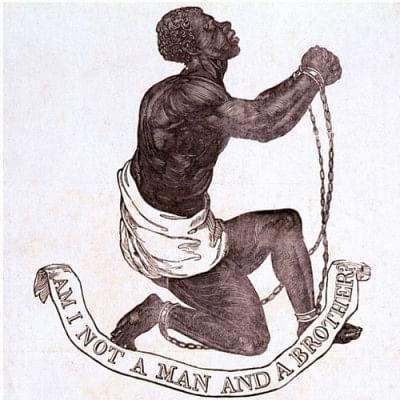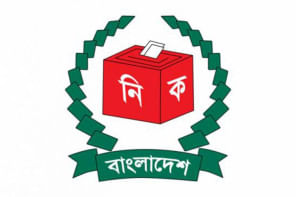Slavery in Bengal: A forgotten history

Notably absent in Bengali literature and history is a rather shameful past: the existence of slaves and the significant role that slavery played in our society and economy. Slavery, in the manner that it existed in Bengal, should not be misunderstood as indentured servitude. Slaves were not just poor labourers and servants. Slaves were legally owned as property by their maliks. Often, they were part of the estate, the owner of which could do with them as he wished. Given that Dhaka was deeply involved in the slave trade, the history of slavery is largely the history of our ancestors. Yet we know so little about the slave industry in Bengal that it seems as though we have willingly removed it from our collective memory. Slavery existed in Bengal for many centuries, prior to and during British rule, and only started to dissipate after the 1840s when the British took legal steps to—if not abolish the practice—weaken the institution of slavery. However, until then, both indigenous slaveholders and European colonialists were involved in the slave trade in Bengal.
Much before the British colonial rule, India was involved in the global slave trade that included Arabia, East Africa, the Persian Gulf, Mauritius, Indonesia, and South Africa, although after the East India Company gained a foothold in the subcontinent, the company itself legitimised and took part in the slave trade. For example, take Governor-General Lord Auckland's argument against legislation banning slavery that slavery provides "mutual advantages" to both the slaves and the masters. Even in the 1840s, a decade after Britain's much-touted Slavery Abolition Act of 1833, conservative estimates suggest that there were half a million slaves in the British territories in India. Slaves were transported from long distances into Bengal, including Coffrees and Habshis (Africans slaves); however, most slaves were indigenous people, mostly war captives, abducted children, or the rural poor who had sold themselves.
Historians have shown that after the famine of 1769-1773, which was largely orchestrated and exacerbated by exploitative British taxation and grain exports, the slave population increased as people sold themselves to the zamindars to escape starvation. Dhaka, Chattogram, Sylhet and Mymensingh were particularly known for agrestic slavery, and according to the Report of Law Commission of 1839, one in five people were slaves at the time. British missionary William Adam writes in 1831, "In 1801, the total population of the [Dacca] district was computed at 938,712 individuals, one-half Hindoo and the other half Mahomedan. A portion of this population consists of slaves, and the sale of persons in a state of slavery is common throughout this district." Indeed, slaves were mentioned in the wills and inventories of 18th-century Anglo-Indians which demonstrates that slaveholding was ubiquitous.
There were primarily two kinds of slaves—agrestic slaves who worked in the land and domestic slaves—although these distinctions cannot accurately describe the diverse labour that slaves performed. Indrani Chatterjee, in her study of Indian slavery in the 19th century, presents evidence of the various tasks, both skilled and unskilled, that slaves were involved in, which largely depended on the wealth, profession and social position of their masters. It also depended on the age, gender and skills of the slaves themselves. Women slaves were expected, and often coerced, to perform productive and reproductive labour for their masters. There are substantial accounts of eunuchs and concubines playing important military, diplomatic and social roles, and some slaves had slaves of their own. Slaves were a signifier of the malik's social status as well, as the rituals regarding the slaves, as well as the number of slaves in employ, indicated wealth and prosperity for the owner. Both Hindus and Muslims held slaves, Hindus calling their slaves "das" or "kritadas" whereas Muslims calling them "ghulam" or "nafar". Slavery in Bengal was structurally different from that practiced in the Atlantic, although the abolitionist movement influenced both slavery systems around the same time.
Owing to the abolitionist movement from the 1780s, there was a growing movement within Britain demanding an end to slavery in India. Rather than abolishing slavery, the government effectively sought to distance British ownership of slaves in India from indigenous slave ownership. The testimonies where British colonial officers admitted to having slaves in the house distinguished their ownership as "emancipatory" rather than exploitative. Others, such as Governor-General Cornwallis, linked non-British European settlers, such as the Portuguese and French, to slaveholding to further distinguish Britain as an abolitionist colonial ruler that does not participate in domestic slavery in India. The justification for slave ownership was delivered with an emancipatory zeal and an ostentatious sense of responsibility to interfere in the nefarious practice of slave ownership by indigenous masters. British Historian Margot Finn argues that this distancing of British morals from the practice of slavery in India enabled British colonialists to continue slaveholding under the auspices of a master-servant relationship in the 19th century.
Abolition of slavery would take many decades in Bengal, even after the enactment of "Act-V" of 1843. Act-V did not abolish slavery itself but dissolved the distinction between free persons and slaves. Although the law did not immediately end the practice of slavery, it laid the foundation for eventual abolition. Making imports and exports of slaves illegal was the first crucial step. It would take many other factors, including abolitionist movements, social stigma around slaveholding, industrialisation and the rise of free labour, to end the practice of slavery. Slavery continued until the early 20th century, a testament to the extent to which slavery was part and parcel of the economy and social fabric in Bengal.
It may very well be that many of our ancestors were slaves only a few generations ago, and hardly do we ever find mention of this great cruelty in our history books. To correctly reconcile with this dark past, we must learn about slave histories in Bengal, teach them in our schools, and address the matter as many other post-slavery societies have done, since the history of slaves in Bengal is our own. One may say that slavery still exists in parts of our country, where the extremely underprivileged are prone to selling themselves and their children to labour in industries where very few legal protections are available to those classes against their employers.
Rasim Alam is a graduate of Tufts University where he studied Economics and International Relations.





Comments